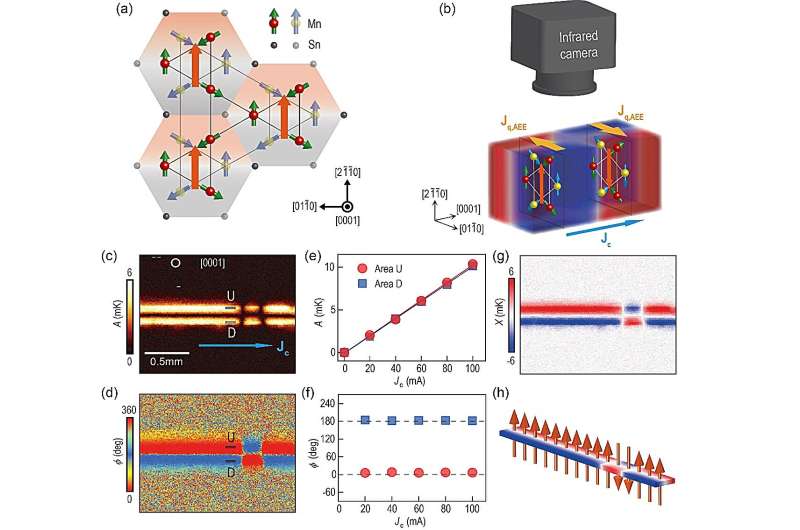This article has been reviewed according to Science X's editorial process and policies. Editors have highlighted the following attributes while ensuring the content's credibility:
fact-checked
trusted source
proofread
High-precision infrared imaging technology reveals the magnetic domain structure of non-collinear antiferromagnets

Non-collinear antiferromagnetic materials, which have a net magnetic moment of nearly zero, yet exhibit significant anomalous transverse transport properties, are considered candidate materials for the next generation of spintronic devices.
The magnetic domain structure of these materials is crucial for information storage. However, magnetic domain imaging for non-collinear antiferromagnetic materials such as Mn3Sn and Mn3Ge has always been a significant challenge in this field of research.
Prof. Dazhi Hou's team from the University of Science and Technology of China, in collaboration with Prof. Yanfeng Guo's team from ShanghaiTech University, has successfully achieved magnetic domain imaging of Mn3Sn and Mn3Ge using the anomalous Ettingshausen effect and lock-in thermography (LIT) technique. They verified the superiority of this innovative method in simultaneously resolving the magnetic domain structure in both in-plane and out-of-plane directions.
The work is published in the National Science Review under the title "Infrared imaging of magnetic octupole domains in non-collinear antiferromagnets."
In this study, the research team first systematically characterized the anomalous Ettingshausen effect of Mn3Sn using lock-in thermography, determining its anomalous Ettingshausen coefficient experimentally for the first time and finding that this value is consistent with the anomalous Nernst coefficient reported in the literature, consistent with the Bridgman relation.
The team further utilized the relation between temperature gradients and magnetic octupole moments to successfully map the magnetic domain structure of a demagnetized Mn3Sn sample, clearly showing three distinct magnetic domain regions. Compared with traditional methods, this innovative approach can simultaneously observe the in-plane and out-of-plane magnetic domains of the material, providing a new perspective for in-depth study of the three-dimensional dynamics of magnetic domains.
With this new method, the research team not only observed the changes in the magnetic domain structure of Mn3Sn and Mn3Ge during the magnetic reversal process, but also revealed the three-dimensional rotation of the magnetic octupole moments in the memory effect of Mn3Sn.
These advancements have yielded significant insights for deciphering the behavior of magnetic domains in non-collinear antiferromagnets, which is instrumental for the development of magnetic storage devices.
More information: Peng Wang et al, Infrared imaging of magnetic octupole domains in non-collinear antiferromagnets, National Science Review (2023). DOI: 10.1093/nsr/nwad308
Provided by Science China Press





















